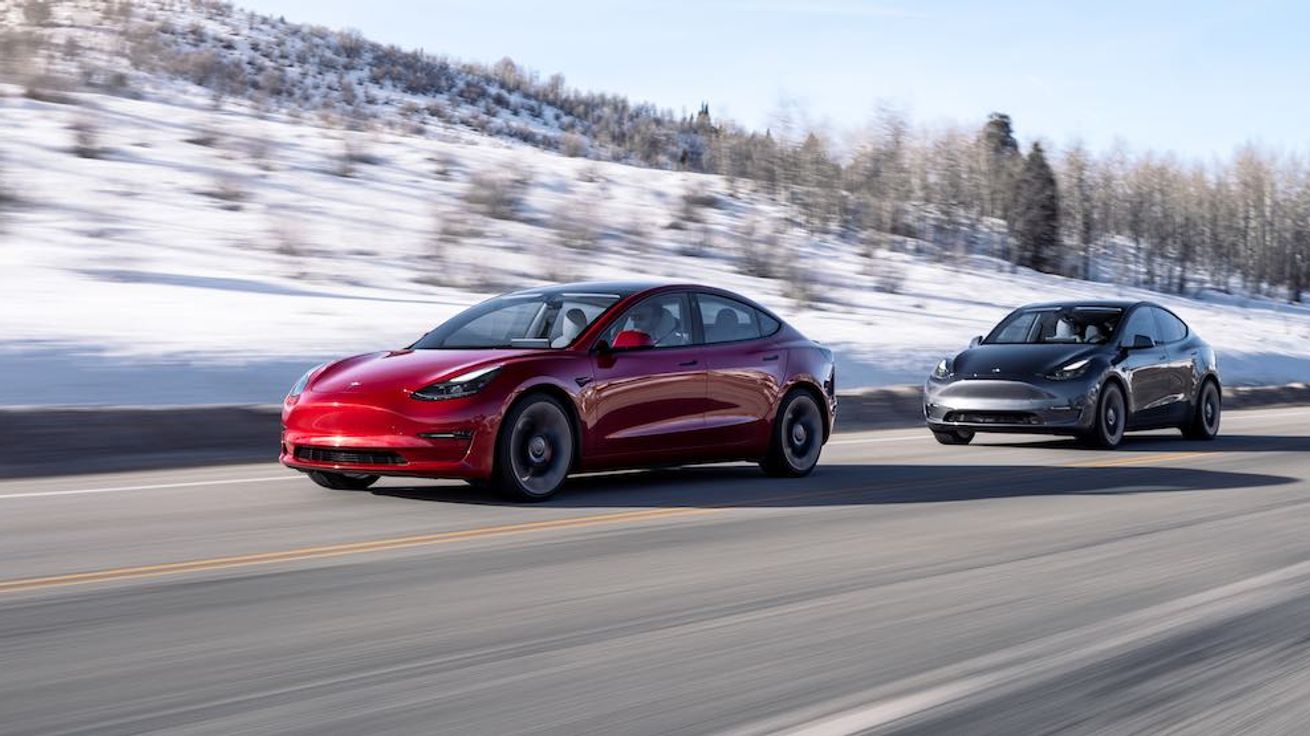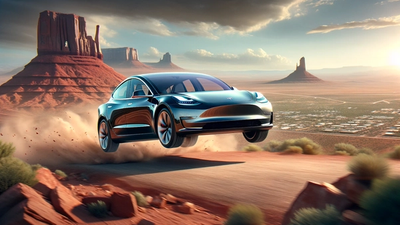Buying a new car is one of the most significant purchases you’ll likely make in your life, so you want to make sure you’re getting the best deal available. That’s why it’s no surprise that the high sticker price of many electric vehicles, particularly Tesla models, has long been one of the main deterrents for people looking to buy a new car, truck, or SUV.
It's no secret that the average sticker price on an EV is a whopping 33% more than a comparable gas-powered vehicle, which can be a significant deterrent for many potential car buyers. However, in California, as gas prices have soared and EV technology has continued to improve, we’ve started to see larger fuel savings on the back end, greater accessibility to charging stations, and a jump in electric vehicle popularity.
Which brings us to Tesla. Tesla’s electric vehicles are by far the most popular EVs in the country. In California, the Tesla Model Y and Model 3 are the two best-selling cars of any kind in the whole state. Yet, despite record sales, they still seem out of reach for most Californians. Not anymore.
In this article, we’re going to show you how California residents can save up to $18,500 on Tesla Model 3 and Model Y by taking advantage of available EV tax credits, rebates, and incentives.
Federal and State EV Incentives
Because the recent boost in EV popularity is great for reducing emissions, California has been introducing even more programs aimed at helping people purchase electric vehicles, investing in their ultimate goal of eliminating the sale of gas-powered vehicles in the state by 2035. Here’s an overview of some of the programs we’ll be exploring in this article:
Tax credit, rebate, or program | Incentives total: up to $18,500 |
|---|
| $7,500 |
| $9,500 |
| $1,500 |
| $0 (retired Nov. 2023) |
Federal EV Tax Credits
The Inflation Reduction Act of 2022
The most recent federal EV tax credit was redefined in the Inflation Reduction Act of 2022. It states that “you may qualify for a tax credit up to $7,500 under IRS Code Section 30D if you buy a new, qualified plug-in EV or fuel cell electric vehicle (FCV)” anytime from 2023 to 2032. The code references a number of eligible vehicles, including the all trims of the Tesla Model Y and certain trims of the Tesla Model 3 and Model X.
The EV tax credit outlined in the Inflation Reduction Act of 2022 is non-refundable, meaning it can only be applied to money you already owe in the tax year you purchase your vehicle. Any unused funds are not available as a refund or to be used on the following year’s taxes. There are also a variety of factors relating to vehicle usage and specifications, MSRP, household income, and manufacturing stipulations that may affect the amount you qualify for.
From January 1, 2024, the federal EV tax credit is now available as an upfront discount applied at point of sale with Tesla for qualified buyers.
California EV Incentives
Clean Cars 4 All
The Clean Cars 4 All program helps lower-income residents invest in EVs by replacing their older, higher-polluting vehicles with cleaner ones.
Residents of the Bay Area, South Coast Area (including Los Angeles), San Joaquin Valley, and Sacramento area who meet income and vehicle eligibility requirements for their area can receive a rebate of up to $9,500 toward the purchase of a new or used plug-in hybrid electric (PHEV), battery electric (BEV), or fuel cell electric vehicle (FCEV).
So, if you have an old gas guzzler that qualifies under the program, the state of California will pay you to swap it for a new Tesla Model Y or Model 3.
The Consumer Assistance Program (CAP)
The Bureau of Automotive Repair’s (BAR) Consumer Assistance Program (CAP) offers consumers repair assistance and vehicle retirement options aimed at reducing motor vehicle emissions.
California residents meeting income eligibility requirements can receive up to $1,500 to retire their vehicle; those who exceed the income cap may still receive up to $1,000. Note that Californians may not qualify for more than one vehicle retirement program, so consider the qualifications for each to determine the maximum rebate for your situation.
Clean Vehicle Rebate Program (CVRP)
California’s popular Clean Vehicle Rebate Project rebate was retired on November 8, 2023. However, there is still a wide variety of state and local incentives available to eligible California drivers. Check EV Life’s Savings Calculator to see what you qualify for.
EV Climate Loan: Getting the Most Out of Your EV Incentives
Traditional auto lenders don’t believe EVs should be financed differently than gas-powered cars, but here at EV Life, we do.
When you apply for the EV Climate Loan with EV Life, here’s how it works:
- Pre-qualify for more than financing. EV Life’s application process is easy and fast. We’ll ensure that you qualify for every tax credit, rebate, and other incentive you’re eligible for, then help you file all the paperwork with our “Turbo Tax-style” incentive filing tools.
- Bundle charging. An EV Life loan enables you to get an instant quote for home charger installation and bundle it into auto financing, reducing your upfront costs.
- One low payment. The EV Life loan applies all your savings directly to your loan, significantly reducing your monthly payment.
If you’re in the market for a new Tesla, don’t let the sticker price deter you. Financing with EV Life guarantees the best prices and the lowest rates on your EV, saving the planet while saving your pocketbook.
Get pre-qualified today to find out how much you could save on your Tesla.






